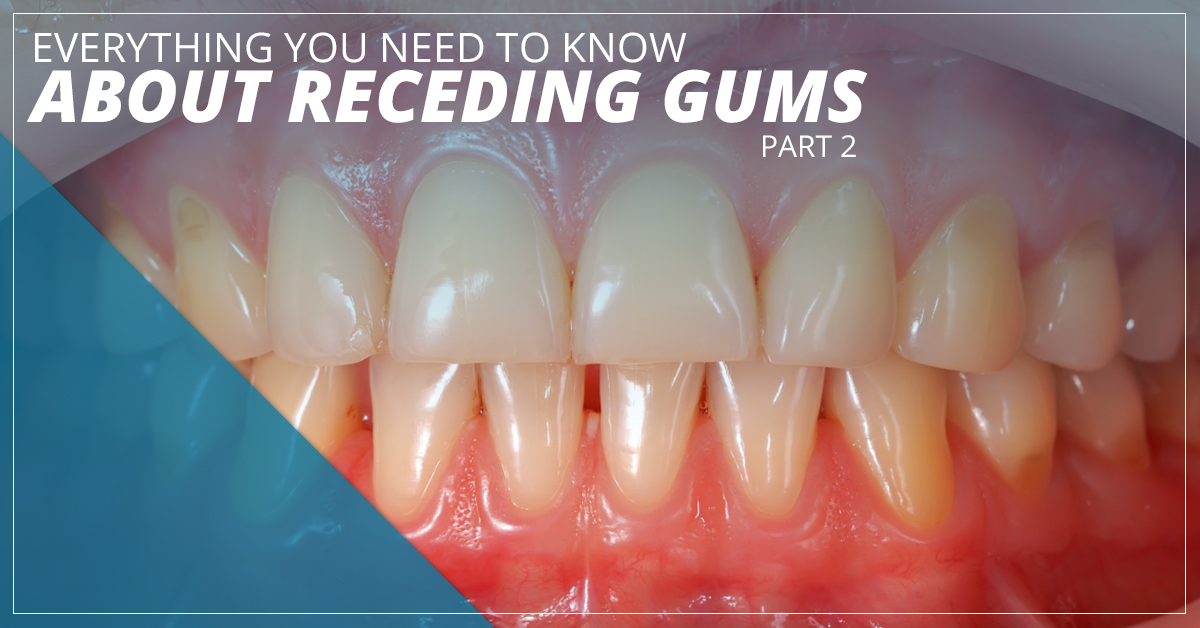
Hello, and welcome back to our blog here at Pacific Northwest Periodontics. Last time we started talking about gum recession, what causes it, how it happens, and some of the conditions associated with it. In this blog, we’re going to discuss prevention and why it matters. If you have receding gums, you should visit an oral health specialist immediately for an appointment.
Why it matters
People who have receding gums typically either don’t know it, or they don’t know enough about the condition to think it’s a serious issue. But gum recession in and of itself isn’t necessarily a threat to your health, it’s more of a sign that there are bigger problems going on. To an oral health specialist, receded gums are an early sign of tooth loss, tooth sensitivity, poor appearance, and generally poorer periodontal condition.
On the contrary, if your gum recession is severe enough, the condition itself may be harmful to your teeth. Gums are supposed to protect your teeth, so if they aren’t completely covering them, they aren’t doing their job. The attached gingiva connects your teeth to the jawbone, and the gingival mucosa protects your gums and cheeks. When the gingival margin is pulled away from the teeth, the roots of the teeth will actually be exposed. Since this part of the tooth doesn’t have any enamel, it will be more susceptible to decay and inevitably, tooth loss.
Even if gum recession isn’t currently causing issues for you, you need to take action or you’ll be at serious risk of periodontal disease and tooth loss. A good place to start is by maintaining a better diet and a better oral hygiene routine? Do you floss? If not, this is something you need to start doing at least once a day. Flossing doesn’t remove food particles from in between your teeth, it removes harmful bacteria that can’t be reached by a toothbrush. Without flossing, this bacteria will remain between the teeth and continue to damage it.
Regrowing Gum Tissue
If prevention is no longer an option, you’re going to need to know how to regrow the lost gum tissue. Like we’ve said, bone tissue needs to be remineralized before your gums will start to repair themselves. And unfortunately, gum tissue won’t just return on its own without your help. Treatment options vary depending on how severe the gingival recession and whether you have signs of periodontal disease or not. Two common options for regrowing gum tissue are gum grafting and the Pinhole Surgical Technique (PST). The former involves removing tissue from another area in the mouth that is healthy and replacing some of the damaged gum tissue with it. In the latter, gum tissue is manipulated over the exposed roots which will protect them and help prevent further recession.
If you’re experiencing gum recession, you need to visit a periodontal specialist immediately. Periodontists specialize in treating the supporting structures of your teeth. Many of the worst diseases and conditions related to oral health start or end in these areas and won’t just result in tooth loss, but could lead to other health conditions that affect your whole body.
Contact Pacific Northwest Periodontics
At Pacific Northwest Periodontics and Dental Implants, our highest priority is to create an individualized plan for each patient that will afford them optimal oral health, comfort, and cosmetics. We offer comprehensive examinations, same-day tooth replacement, All-On-Four dental implants and much more in Seattle and the surrounding area. Gum recession isn’t something that happens overnight which makes it all the more important to visit an oral health specialist on a regular basis. Contact us today to learn more or schedule an appointment.








